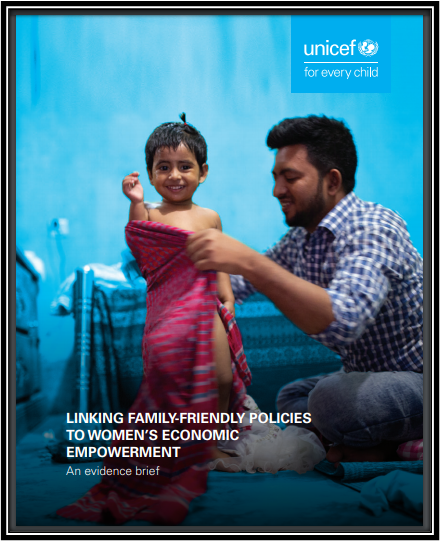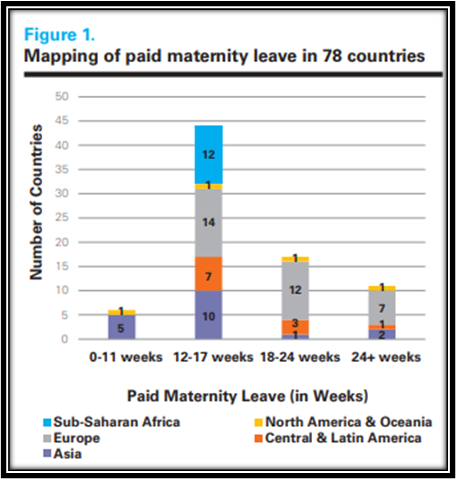5.6.3. Maternity and paternity policies
Lebanese University promotes Gender equality for the sake of enhancing Students' performance and for supporting women’s participation, the University has maternity and paternity policies.
Many companies still view motherhood and fatherhood as mutually exclusive activities from employment. When outdated societal perceptions and cultural expectations surrounding motherhood limit women’s contribution at work, families, companies and economies are adversely affected. Similarly, overcoming resistance to entrenched stereotypes of masculinity may clash with men’s changing perceptions of fatherhood. Employees who take maternity leave form a crucial talent pool and retaining this talent is imperative for companies to strengthen its limited pipeline of women leaders. Paternity leave is increasingly seen as a positive measure that promotes family-friendly environments and recognizes the role of fathers in today’s business environment. New mothers and fathers come back to work with new insights, and parenthood is a great learning experience that enhances key skills such as prioritization and empathy that are important in a business environment.
According to UNICEF, Women’s economic empowerment goes beyond mere labor force participation, to signify movement towards a ‘double boon’ – which can be understood as a condition in which (a) women have access to decent, empowering work, and (b) unpaid care and ancillary work is redistributed such that women undertake no more than their fair share of the labor of reproducing society.
ILO’s 1981 Convention on Workers with Family Responsibilities (no. 156), that made a case for FFPs that went beyond maternity provisions, to include paternity and parental leave – and thereby opened the door for these policies to recognize women’s unpaid care work and attempt to redistribute it to men and to the State.
FFPs can be classified into three main types: time-related, service-related and finance-related policies. Time-related policies include maternity/paternity/ parental leave, breastfeeding breaks, flexible working hours and any other special/childcare leave. Service-related policies include affordable, accessible and quality childcare services, while finance-related policies refer to those policies that provide cash benefits/grants for the care of children or wage replacement.
As figure 1 shows, all 78 countries surveyed offer paid maternity leave provision, with a majority of countries providing between 12 and 17 weeks of leave. It is notable that while many European countries have longer maternity leave (up to two years), this is largely unpaid or at a low earnings rate. On the other hand, slightly more than half of the countries surveyed (56 percent) offer any paternity leave.
Of these, 68 percent of countries provide less than 10 days of paternal leave, while only 11 percent of countries provide more than two weeks (Iceland offers the greatest number of days for fathers – 91 days of leave). Paid parental leave is equally scant – 59 percent of countries do not offer any form of parental leave. Among those countries that do, seven offer 3–6 months of leave, while 11 countries offer 7–12 months, with European countries dominating this provision. Only eight countries offered more than 18 months of shared paid parental leave – with the Czech Republic, France, Hungary, and the Slovak Republic offering 36 months of parental leave.
The ten Middle Eastern countries, 30 percent provide six weeks or more (Jordan, Saudi Arabia and Yemen, while Iraq provides five weeks), while half make no provision for compulsory leave at all (Bahrain, Kuwait, Lebanon, Syrian Arab Republic and the United Arab Emirates). Lebanon increase the time from 40 days to seven weeks (in 2000). However, those countries are not included in the data in order to maintain consistency with the countries which provided data in 1994.
In the Middle East, the large majority provide for flexibility regarding when and how the leave can be taken (including Jordan, Lebanon, and Qatar), while in Eastern Europe and Central Asia, only Belarus offered a choice in how to distribute maternity leave.
For Lebanese university, the policy is:
Maternity Leave
For Full-Time Female Staff Members
All full-time female staff members shall be entitled to ten (10) weeks, the equivalent of seventy (70) days, maternity leave with full pay.
Maternity leave shall be granted upon the presentation of a physician’s certificate giving the approximate date of delivery.
Maternity leave shall not affect any entitlement to annual leave, and both may be taken sequentially if work requirements permit.
For Full-Time Female Faculty
All full-time female faculty [in tenure and non-tenure tracks], are to be granted an extended time following or preceding delivery of their new-born, which consists of the legally approved 70 days [the equivalent of 10 weeks] of paid maternity leave, in addition to the remaining time of the applicable term.
The practice of teaching half the term, and allocating the other half to a substitute teacher, shall be discontinued.
Faculty have to send a memo to their respective Chairperson prior to the beginning of the term in question, requesting the leave and stating one of the below options.
Maternity leave shall be granted upon presentation of a physician’s Certificate giving the approximate date of delivery.
All health insurance benefits, and other benefits shall remain in effect.
During the maternity leave, regardless of which option below is chosen:
For faculty on the tenure track, the grace period for each pregnancy shall be a one-year deferral per pregnancy, not to exceed a 2-year maximum.
The faculty members concerned are to be extended their leave of absence to the full extent of the regular term [fall or spring] with the following provision: The University shall grant the concerned faculty a partial waiver, leaving her with only a 3 credit balance of the applicable term load that can be made up anytime during the following 3 regular terms [or summer term]. In this case, the faculty concerned would continue to receive regular payments throughout the academic year in which her pregnancy occurs.
For faculty members who choose not to benefit from the above, the remainder of the term can be claimed on the basis of ‘unpaid leave of absence’ that is prorated to the time not covered by the official maternity leave [70 days – the equivalent of 10 weeks]. This would amount to a 12.5% reduction in their salary for the applicable academic yea.
Paternity Leave
All Full-Time male employees shall be entitled to two days of paternity leave with full pay.
Paternity leave shall not affect any entitlement to annual leave.





